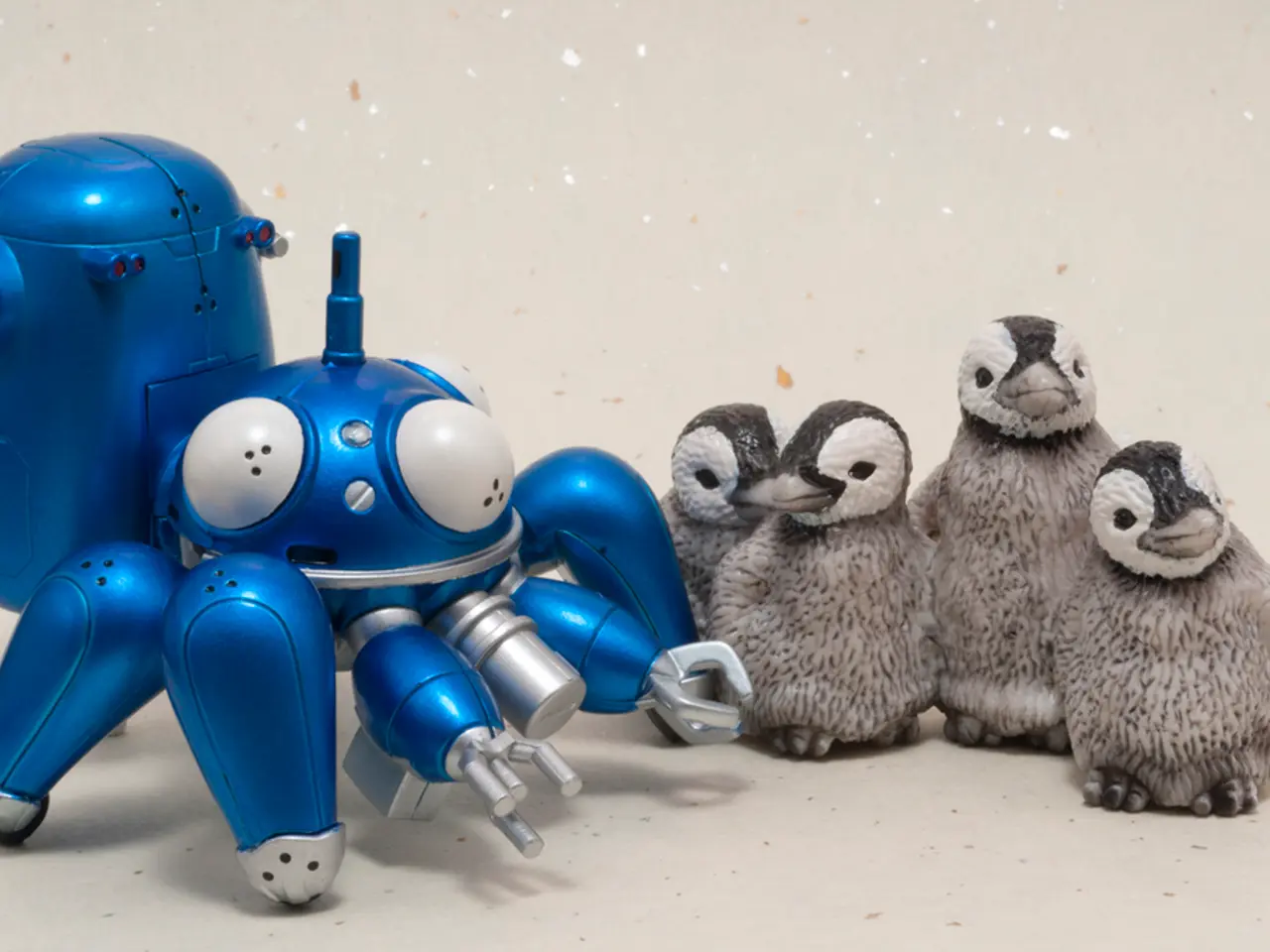Pebbles Serving as Proposal Symbols Among Penguins, But Subject to Theft from Competitors
In the icy landscapes of Antarctica, a unique and intricate dance unfolds among penguins, one that revolves around a humble pebble. Pebbles, it seems, are more than just rocks to these flightless birds; they are symbols of affection, survival tools, and tokens of commitment.
During their courtship rituals, male penguins present their female counterparts with a carefully selected pebble, a gesture that carries deep significance. This pebble, often the smoothest and most perfect, serves as a proposal of partnership and commitment, symbolising love, commitment, and the intention to build a shared future together.
But the importance of the pebble extends beyond romance. These stones are essential for constructing nests, providing crucial protection for eggs and offspring. High-quality pebbles, with their smooth, well-shaped forms, help create sturdy nests that shield eggs from the cold, wet ground and potential flooding or displacement. In essence, selecting good pebbles improves the chances of reproductive success and offspring survival.
This interplay of courtship display and practical necessity highlights how intertwined penguin mating behaviours are with their ecological needs. In the harsh Antarctic environment, a perfectly chosen pebble isn't just a romantic gesture-it's a survival tool that could determine the fate of future penguin chicks.
However, climate change is reshaping the penguin pebble economy, affecting traditional pebble sources and increasing competition. Some penguins are adapting to scarce pebble sources by using innovative materials like plastic debris and research equipment.
Penguin pebble selection follows sophisticated criteria, optimising nest insulation and drainage. Smooth, round stones are the holy grail of penguin real estate, offering better drainage and comfort for sitting parents. Weather conditions impact pebble availability and quality, creating periods of abundance and scarcity.
In penguin colonies, location determines everything, and the best neighborhoods have the best pebbles. Pebble disputes can lead to "pebble divorces" and vindictive behaviours among penguins. Successful penguin thieves target specific stones and plan their heists accordingly.
Despite the competition, females have developed incredibly sophisticated standards for evaluating potential nest-building materials. The most valuable pebbles-those perfect, smooth stones-become the subject of ongoing feuds that can span entire breeding seasons.
Among the various penguin species, Adelie penguins are the most famous pebble collectors, but other species like Gentoo and Chinstrap penguins have their own unique twists on this ancient courtship dance. Collaborative approaches among penguins suggest cultural evolution, passing down new knowledge through social learning networks.
Seasonal fluctuations occur in the penguin pebble market, with competition being highest early in the breeding season. Colour preferences have emerged as a factor in pebble selection, potentially providing camouflage or thermal benefits.
This fascinating behaviour, practiced by penguins for thousands of years, underscores the intricate balance between romance and survival in these resilient creatures. It's a dance that continues to evolve, adapting to the ever-changing environment of the Antarctic.
- Researchers studying Antarctic penguins have discovered a significant connection between the birds' courtship rituals and the selection of certain pebbles.
- The pebble used in the penguin courtship process is a symbol of love, commitment, and survival.
- Male penguins go to great lengths to present their potential partners with the perfect pebble, enhancing their chances of success.
- Pebbles are essential for building nests and providing protection for eggs and chicks in harsh Antarctic climates.
- Penguins in the Antarctic often encounter challenges related to climate change and dwindling resources, including the availability of specific pebbles for their nests.
- Some penguins have adapted to scarcity by using non-traditional materials like plastic debris or research equipment for their nests.
- Penguin pebble selection follows strict criteria to optimize nest insulation and drainage.
- The quality of pebbles can determine the success of a penguin's reproductive efforts and the survival of their offspring.
- Weather conditions play a considerable role in the availability and quality of pebbles, affecting the success of penguin breeding seasons.
- Penguin colonies show a clear hierarchy based on the quality of their pebbles and the location of their nests.
- Pebble disputes can escalate into conflicts and vindictive behavior among penguins, even leading to "pebble divorces."
- Successful penguin thieves target specific, valuable pebbles and carefully plan their heists.
- Female penguins have developed sophisticated standards for evaluating potential nest-building materials.
- Different penguin species, such as Adelie, Gentoo, and Chinstrap, have distinctive approaches to the pebble courtship ritual.
- Collaborative approaches among penguins suggest ongoing cultural evolution and the passing down of knowledge through social learning networks.
- Seasonal fluctuations in the penguin pebble market create periods of competition, especially early in the breeding season.
- Color preferences may play a role in penguin pebble selection, with potential benefits for camouflage or temperature regulation.
- The ancient dance of the penguins reveals an intricate balance between love, survival, and adaption in these resilient creatures.
- This fascinating behavior provides valuable insights into the complex dynamics of Antarctic penguin colonies and their evolution.
- The selection of pebbles by penguins can have far-reaching implications for the conservation and preservation of Antarctic ecosystems.
- As climate change continues to reshape the Antarctic landscape, researchers are working to monitor and understand the effects on penguin populations and their pebble-gathering habits.
- Innovations in energy and technology, such as electric vehicles and sustainable fashion choices, could help reduce the environmental impact on penguin habitats.
- In addition to the penguin pebble market, changes in the Antarctic ecosystem affect other aspects of penguin life, including their access to food and inclement weather.
- Social media can play a critical role in raising awareness about climate change and its impact on penguins and other wildlife.
- Product reviews and consumer choices regarding energy-efficient cars and other green technologies can help mitigate the effects of climate change on the penguin pebble market.
- Adventure travel to Antarctica through sustainable tour companies can help support conservation efforts and promote responsible tourism practices.
- By understanding and appreciating the unique behavior of Antarctic penguins, we can develop a deeper respect and connection with nature and our shared planet.




